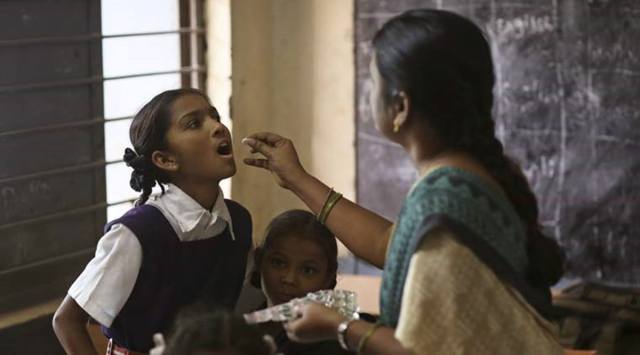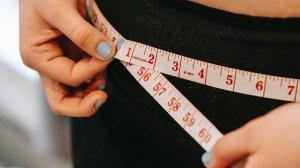- India
- International
Healthy diet for adolescents
Programmes to address malnutrition will have to find ways of addressing poor food choices amongst children of 10-19 years.

India is home to almost a fifth of the global adolescent (10-19 years) population. This period of transition of a child into adulthood, accompanied by significant physical, physiological, psychological, and behavioural changes, is the second and the last “window of opportunity” in life for gaining optimum height, and for catch up growth — the first being the first 1,000 days of life. Nutritional requirements increase substantially and peak during this period with a 15–25 per cent increase in height, attainment of 40–60 per cent of peak bone mass and up to 50 per cent of adult body weight — as well as blood loss due to the onset of menstruation among girls.
The first Comprehensive National Nutrition Survey (CNNS) in 2019 of the adolescent population by the Union Ministry of Health and Family Welfare and UNICEF, reveals that every second Indian adolescent suffers from some form of malnutrition. Almost a third of adolescent girls and a quarter of adolescent boys are short for their age. About a quarter of adolescents (24.1 per cent) are thin for their age while 4.8 per cent are overweight. The anaemia prevalence rate among girls (40 per cent) is double compared to boys (18 per cent). Anaemia is a serious public health problem amongst adolescent girls 15-19 years in 19 states.
Malnutrition with short stature, underweight and anaemia is higher among girls in rural areas, larger families, less educated or skilled parents, and lower-income households. Poor dietary practice is a primary contributor to malnutrition. Despite a high requirement for body-building protein foods such as pulses, consumption of these is low among all adolescents across most states. Only two out of five adolescents consume milk and milk products daily. Only about 20 per cent of adolescents consume pulses daily, while another 20 per cent of adolescents do not consume pulses even once a week. Preferences and consumption patterns also frequently have a gender dimension. Girls, compared to boys, consume fewer food items with high nutrient value, such as milk, fruit, eggs, and meat.
Poor knowledge and poor food choices, not necessarily poor purchasing power, is the reason behind malnutrition — eight out of 10 adolescents consume foods high in fats, salt and sugar including sweetened beverages. These poor dietary habits combined with the majority of the respondents not following the recommended daily physical activity of 60 minutes have resulted in an alarming increase in the incidence of serious diseases. CNNS reports one in 10 adolescents is pre-diabetic, one per cent diabetic and 5 per cent hypertensive. Added to these is an increasing problem of obsessive desire to lose weight by refusing to eat due to “perceived” fatness and an attempt to improve “self -image”. The result is an increase in an undesirable trend in cases of “anorexia nervosa”, a health disorder estimated to affect 37.2/100,000 girls, A recent study from semi-urban Himachal Pradesh reports girls often skipping meals or avoiding consumption of nutritious food items such as milk, and eggs in order to look slim.
Another serious health concern is the prevalent cultural practices of early marriage and pregnancy, primarily in the disadvantaged population. As per the National Family Health Survey-4 (2015-16), almost a quarter of women are married before attaining the age of 18. Adolescent marriage and early pregnancies interfere with normal bone growth and maturation of the pelvis and birth canals. Early conception not only increases the risk of maternal mortality, stillbirths, neonatal deaths but also has a detrimental impact on foetal growth resulting in low birth weight and a poor start to life. The result is an intergenerational cycle of malnutrition contributing to “stunting” and low weight in young children. Today, India contributes to a third of undernourished children in the world with three to five children out of 10 under-fives being stunted.

Investment in adolescent nutrition is crucial. Adolescent health and development issues have been centre-staged in the Global Strategy for Women’s, Children’s and Adolescents’ Health (2016–2030), and the overall success of the 2030 Agenda of Sustainable Development Goals (SDG). The strategy recognises that healthy adolescents contribute significantly to improved school performance, productivity and, economic growth by breaking the intergenerational transmission of malnutrition, ill health, and poverty. In India, the “Anaemia Mukt Bharat” aims at universal coverage of school children, adolescents and women in the reproductive age with weekly doses of iron folic acid (IFA) supplements (WIFS) and periodical deworming.
Reaching a “captive” target of school-going girls seems doable for the programme, while reaching girls out of school as well as newly married women with WIFS remains a challenge. In this context, it is time that innovative initiatives by states could be critically studied to explore the scope of scaling up the best practices and reach “out of school” girls. One such initiative is by Uttar Pradesh where the UMANG (Upgrading Marriage Age Nutrition and Growth) reaches out of schoolgirls. Jharkhand’s programme for adolescent girls is also worth mentioning.
Under the UMANG Project, “kitty” groups of about 24 girls was formed who were trained on health, nutrition, and personal sanitation care of self and other adolescent girls. The Adolescent Girls Scheme of ICDS, could be redesigned with trained schoolgirls reaching and counselling out of schoolgirls.
For reducing anaemia, ensuring the availability of IFA tablets at low cost to adolescent girls in middle and high socio-economic groups, including those in private schools, is essential. A social marketing strategy for IFA tablets pilot tested in the late 1990s by Delhi government in partnership with the NGO, Parivar Seva Sanstha, provides important leads. Such social marketing of IFA supplements is also reported from countries such as Cambodia and the Philippines. Such a strategy would enhance the public image of “Anaemia Mukt Bharat” programme. Besides these measures, effort needs to be directed at launching a national campaign on “right food” and adequate physical activity as well as on promoting regular consumption of selected food items fortified with iron and vitamins. There is a need to build on the national public health success of elimination of iodine deficiency through iodine fortified salt programme. Additionally, the guidelines issued by Food Safety and Standards Authority of India (FSSAI) regarding fortification of wheat, rice, oil, salt and a plan under finalisation to promote safe and healthy diets for school children offer opportunities to address malnutrition in adolescents.
With the launch of POSHAN Abhiyaan in 2018, political will is higher than ever before, for achieving the objectives of reducing stunting, low birth weight and anaemia. The interventions must look beyond the critical 1,000 days and address the challenge of malnutrition in the second decade of life or adolescent malnutrition. There is an urgent need to recognise that the two distinct population groups must be an integral part of POSHAN Abhiyan campaign — women in the preconception stage and adolescent girls.
It is estimated that for every rupee invested in adolescent health, there is a tenfold social and economic return. The time to invest and act for addressing adolescent nutrition is now. A focus on the adolescent population would contribute to improving education and protecting the future generations from malnutrition, ill health, and in building quality human resource imperative to shift to “Atmanirbhar Bharat”.
The writer is Founder Director, Public Health Nutrition and Development Centre, New Delhi
EXPRESS OPINION
More Explained
Apr 23: Latest News
- 01
- 02
- 03
- 04
- 05









































